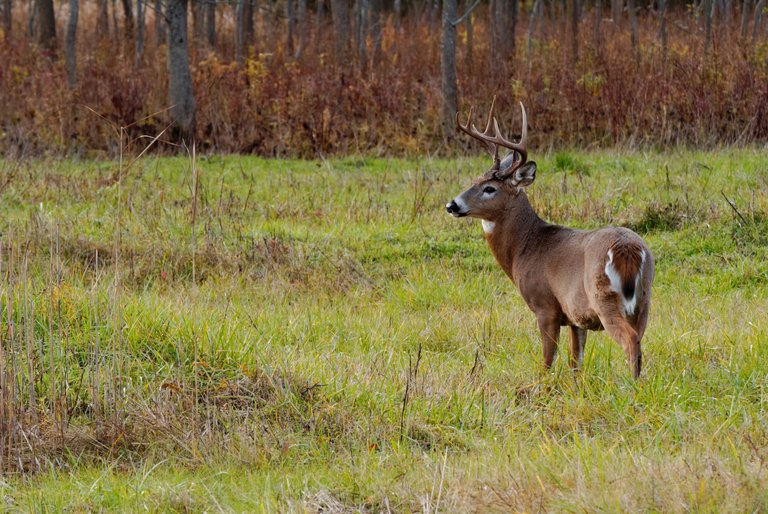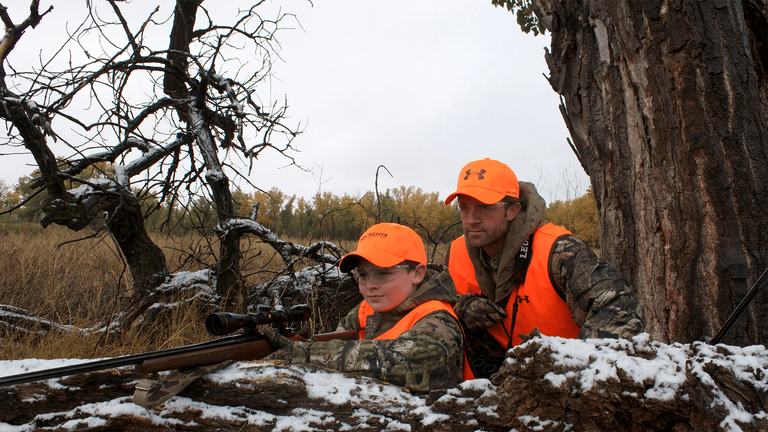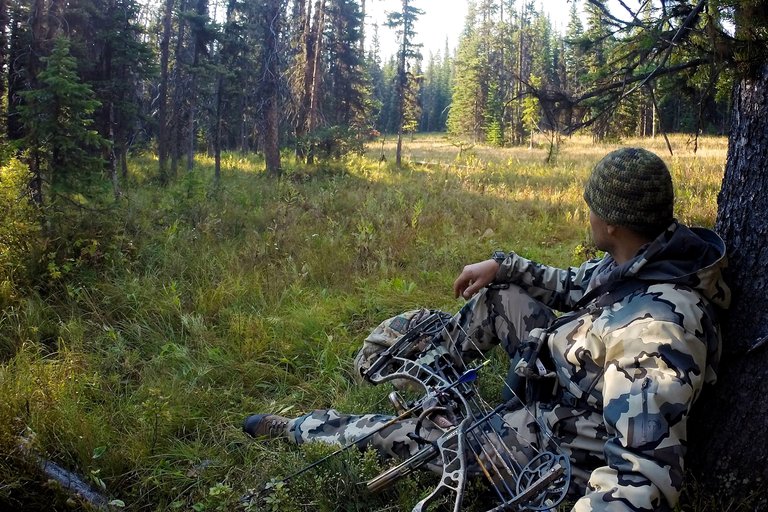Deer Hunting Tips: Tree Stands vs. Ground Blinds
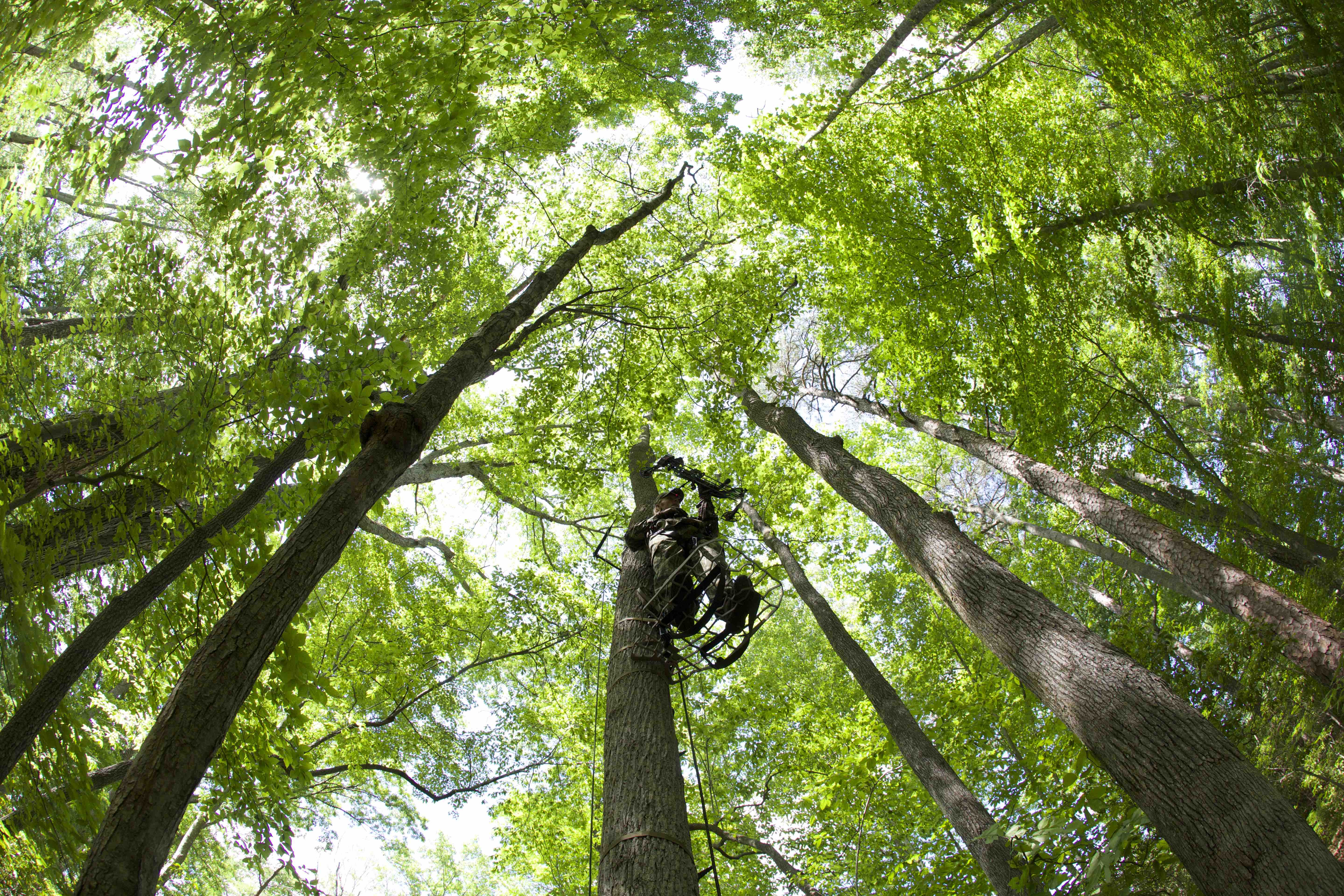
At last, deer season is here! You’ve been preparing all summer long and the hard work is finally about to pay off. You have put in the time to properly scout, and you have finally found a spot to setup. So, let’s focus on getting you the best shot possible. There are two primary methods for hunting whitetails. There are hunters who setup in tree stands and those who prefer to hunt from a ground blind. Both methods can give you great success and both have their advantages and disadvantages. Of course, there are always the hunters who sit in their truck or walk up and down logging roads. For our objective, we will focus on tree stands and ground blinds.
Everything You Need to Know About Tree Stands and Ground Blinds
What Is a Tree Stand?
Tree stands are elevated platforms used by hunters. In most cases, these platforms are secured to trees to elevate the hunter, resulting in a better vantage point. For those who are new to hunting, tree stands are one of the most effective tools you can use when hunting deer. Elevating your position not only improves your field of vision, but also significantly reduces your chances of being spotted by deer. Personally, I hunt from a tree stand around 95% of the time. The only exceptions are poor weather conditions or a lack of good trees in the area.
Advantages of Using Tree Stands
An elevated position creates additional shot opportunities that would be impossible in a ground blind.
Deer Eye Level
In most of the country, both predators and food sources for deer are at eye level or below. They have very little need to look up unless they see movement. If you get even six feet off the ground and remain still, it gives you a huge advantage. Most tree stands are set at 15 to 20 feet off the ground, so you are well above the deer's eye level.
Middle of the Action
Deer are creatures of habit. They often travel the same game trails back and forth between food, water, and bedding areas. If you find a good spot and put up a tree stand, you can hunt there every day and plan on seeing deer. Deer have incredible detection abilities, so sitting still in your stand is preferential to walking around.
Shot Distance
The height of a tree stand allows you to see deer at a further distance. This permits you to shoot before they might catch your scent. Your elevated position also creates additional shot opportunities that would be impossible in a ground blind.
Disadvantages of Using Tree Stands
Using a tree stand adds an additional safety risk. Always use a Fall-Arrest System (FAS) and be aware of inclement weather conditions.
The Elements
Of the few downsides to tree stands, the biggest for me is that it gets very cold. Being up off the ground, you catch the wind much more than you would on the ground. For those who are afraid of heights, this is not a good option. I have been in stands 20 feet high in a pine tree on a windy day. At times, the stand would sway several feet in each direction with strong wind gusts.
Added Safety Risk
There is an added safety risk with using tree stands. People are injured every year falling from tree stands. You are in a small space, two stories high, and often you climb the ladder in the dark with slick conditions. When hunting from a tree stand, always use a properly fitting Fall-Arrest System (FAS) that includes a full-body harness and lifeline at all times when your feet are off the ground.
Remember, the FAS needs to be rated for your hunting weight, which is your weight plus the weight of your hunting equipment and gear. If you forget any component of your FAS equipment at home, play it safe and hunt from the ground. Also, you must find a tree that will work for the particular stand you are using. Finding the right tree is not always easy.
Choosing the Right Type of Tree Stand
When choosing a tree stand, you want to take into account what you are hunting, when you are hunting and how much gear you are taking with you. There are dozens of different styles of tree stands from which you can choose. However, we will focus on the three stands I see people use most often.
Ladder Stands
These stands combine a platform and ladder, allowing use on a wider range of trees than most other platform stands. They are a great choice for beginning hunters and anyone uncomfortable with heights. Ladder stands offer more room than a hang-on stand, and they are relatively easier to get into. When using a ladder stand, you must consider terrain slope and finding a suitable tree with large branches for placement and support.
Hang-On Stands
These stands are simple platforms that must be hauled into place and secured with belts or chains. This type of stand requires separate climbing aids, such as steps. Hang-on stands are more difficult to move than climbing stands. Hang-on stands are a popular choice for bow-hunters for their versatility. Many hang-on stands offer adjustable platforms and seats that provide the ability to use them in a variety of trees.
Climbing Stands
There are also some hunters who use climbing stands. These are stands you bring with you each day you hunt. You strap the stand around the base of a straight tree with no limbs, and then crank your way up the tree with your legs. You then take the stand with you at the end of the day. These types of stands are ideal for public land due to their lighter weight and portability.
What Are Ground Blinds?
Ground blinds are cover devices for hunters, designed to reduce the chance of detection. They serve to hide your location while keeping you on the ground. Most ground blinds are makeshift or temporary structures. They can be as simple as a natural blind built behind a tree, bush, or rock or as sophisticated as a portable, enclosed camouflage-cloth blind. Blinds usually are located close to game food sources, game trails, or watering holes.
Advantages of Using Ground Blinds
Ground blinds are ideal for hunting with buddies, children, or new hunters. You have more freedom to communicate in a ground blind, but remember to avoid detection.
More Freedom to Move
There are a few benefits to a ground blind setup. One is that some ground blinds can almost completely hide your movements. If you are the type of hunter that likes to have breakfast, drink coffee, and watch the news in your stand, a ground blind is for you. In addition, ground blinds give you space. Instead of sitting or standing on a tiny tree stand, you have several feet in each direction to stretch out and drop your gear.
Crowd-Friendly
Ground blinds are ideal for hunting with children, or just with buddies that act like children. You can keep the other person right there so communication is easier and safer. For those learning to hunt, you can walk them through the shot step by step.
Ground blinds are also better for inclement weather. They are not as cold as they help block the wind, and many are waterproof for those rainy days. My father and I hunt out of tree stands, but we always have a ground blind set up for when the rains come.
Disadvantages of Using Ground Blinds
Ground blinds can limit your visibility and shooting lanes. Proper placement of your blind helps to improve these disadvantages.
Limited Vision
There are three primary concerns with a ground blind. One is that your visibility is limited. This means a deer might be right on top of you before you even know he is there. You are on the ground, so your vantage point is limited to what is right in front of you.
Shooting Lanes
Another is that your shooting lanes are limited. There are only so many places that you can point the barrel of your gun. One way around this is to find an area where you will see deer traveling up and down. This allows you to have multiple shooting lanes at your disposal and gives you additional time to make the shot.
You're Going to Need a Chair
Finally, there is the chair concern. You need some sort of chair or stool to get your shoulders at the right height for a shot. A small portable stool or chair makes the wait more comfortable, but carrying a blind and a chair along with your other gear can be a pain.
Choosing the Right Type of Ground Blind
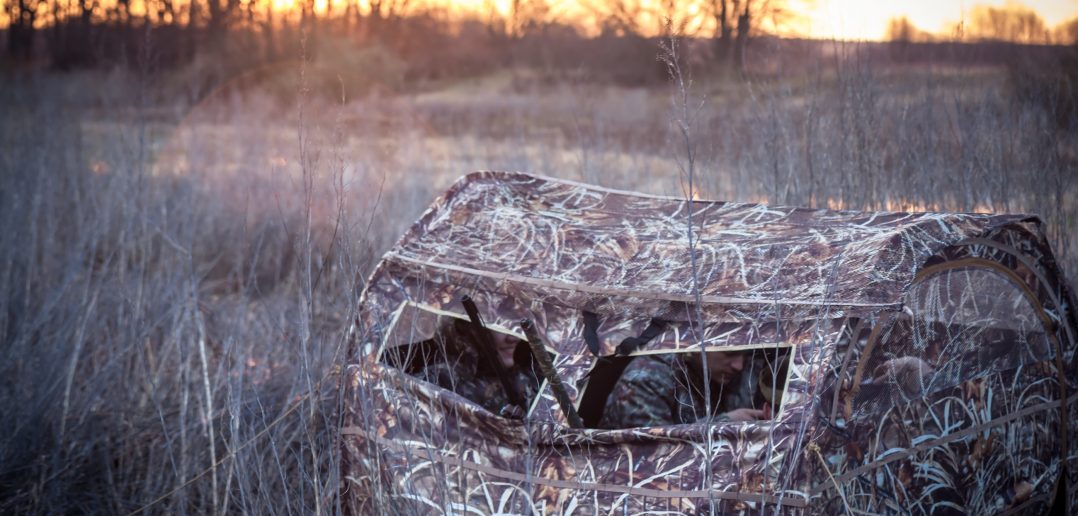
Tent style blinds are some of the most popular commercially produced ground blinds. A pop-up style tent, fully camouflaged, typically sells in the $100 range.
Tent Style Blind
There are three styles of ground blind that I see on a regular basis. The most common is a tent style ground blind. These blinds fold up just like a tent, so they are easy to carry. When you set them up they typically are camouflage, waterproof, netted for insects, and give you almost a 360-degree view. They are also portable, so you can set it up wherever you want. Some are inexpensive while others will cost you several hundred dollars.
Do-It-Yourself Blind
Some people build their own ground blind with building materials. They basically build a small cabin with windows on all four sides. These are inexpensive to build, but require some work and are completely permanent. You will lose the advantage of easy relocation with this type of setup.
Natural Blind
The last ground blind I see is one using natural materials. Some hunters simply find some thick brush or briars and duck down behind. Others pile up debris to give them a more complete blind on every side. This again requires some work, but it costs nothing. Your visible protection is not as complete, so it is important that you keep movement to a minimum. They are also not waterproof, so bring your rain gear.
Conclusion
With tree stands and ground blinds, there isn't a right or wrong way to go. Use what makes you comfortable. No matter what method you decide to use, take the time to scout the area, find the best place to setup and, of course, enjoy the time spent out on the hunt.
Article by Ryan Dotson and Chris Haught

